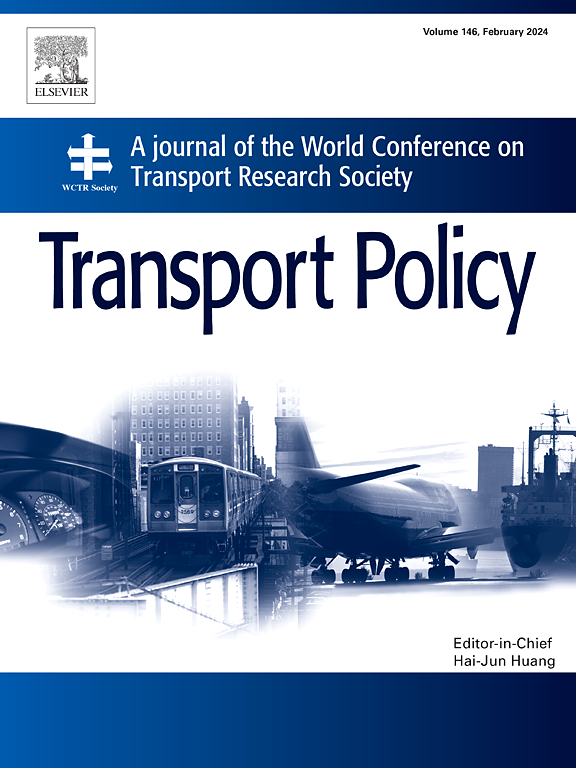靠近地铁站与交通贫困的关系:时空变化
IF 6.3
2区 工程技术
Q1 ECONOMICS
引用次数: 0
摘要
本研究探讨了地铁站附近与交通贫困的关系及其时空变化。该研究的观察结果来自台湾台北大都市区的1488个社区,涵盖了1996年至2016年的数据。提出了交通贫困指数,将其定义为经济剥夺指数与工作可达性指数之间的差距,以衡量一个社区的交通贫困程度。采用面板数据和线性回归模型对数据进行分析。结果表明:(1)在特定距离阈值范围内,到地铁站的距离与交通贫困程度呈正相关。(2)随着地铁站点数量的增加,二者之间的正相关关系整体呈下降趋势。(3)总体上,随着距离地铁车站的远近,正相关关系在短期内呈下降趋势,但在长期内呈上升趋势。这些发现强调,在发展地铁网络时,地方政府应同时推动远离地铁服务的地区的无障碍计划,并优先改善交通和摩托车的可达性。本文章由计算机程序翻译,如有差异,请以英文原文为准。
Associations of proximity to metro stations with transport poverty: Spatial and temporal variations
This work explores the associations of proximity to metro stations with transport poverty and their spatial and temporal variations. The study's observations are from the 1488 neighborhoods in the Taipei Metropolitan Area, Taiwan, covering data from 1996 to 2016. A transport poverty index, defined as the disparity between the economic deprivation index and the job accessibility index, is proposed to measure the transport poverty degree of a neighborhood. Panel data and linear regression models are applied to analyze the data. The results indicate the following: (1) Distance to metro stations is positively associated with the degree of transport poverty within the specific distance thresholds. (2) The positive relationships move downward as a whole over time with the increase in the number of metro stations. (3) The overall downward moves of positive relationships are decreasing with distances to metro stations in the short term but are increasing with distances to metro stations in the long term. These findings highlight that, when developing metro networks, local administrations should simultaneously promote accessibility plans in areas distant from metro services and prioritize improvements in transit and motorcycle accessibility.
求助全文
通过发布文献求助,成功后即可免费获取论文全文。
去求助
来源期刊

Transport Policy
Multiple-
CiteScore
12.10
自引率
10.30%
发文量
282
期刊介绍:
Transport Policy is an international journal aimed at bridging the gap between theory and practice in transport. Its subject areas reflect the concerns of policymakers in government, industry, voluntary organisations and the public at large, providing independent, original and rigorous analysis to understand how policy decisions have been taken, monitor their effects, and suggest how they may be improved. The journal treats the transport sector comprehensively, and in the context of other sectors including energy, housing, industry and planning. All modes are covered: land, sea and air; road and rail; public and private; motorised and non-motorised; passenger and freight.
 求助内容:
求助内容: 应助结果提醒方式:
应助结果提醒方式:


